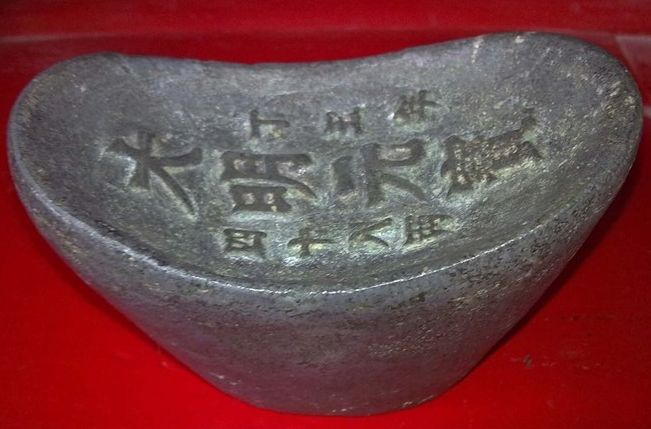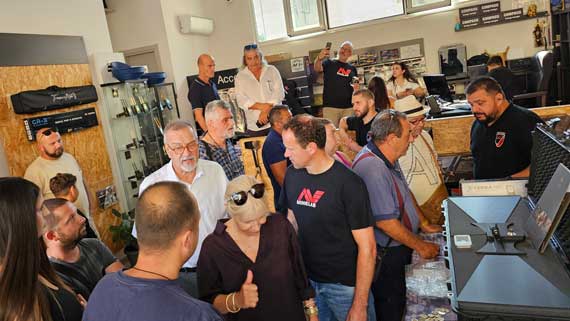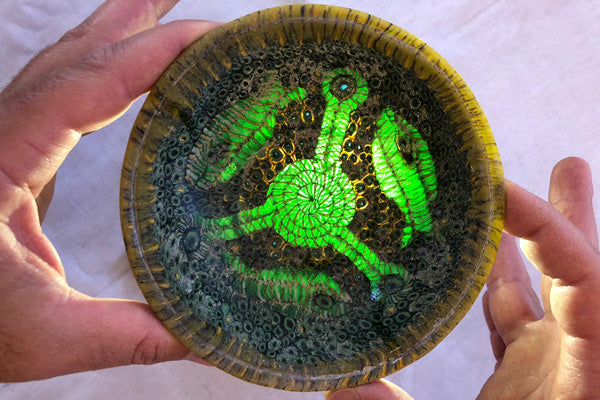Figure of Artemis Discovered in Kurdistan (Iraq)

Detected with
OKM Rover UC
Region: Zaxo, Kurdistan (Iraq)
Weight: 214 g | 7.5 oz

Artemis, the Goddess of Hunting
This beautiful figurine was found by a treasure hunter in Zaxo, Iraq, with the OKM Rover UC. Zaxo is the northernmost city of Kurdistan and lies at the border with Turkey.
The figurine weighs 214 g (7.5 oz) and depicts Artemis—goddess of hunting, virginity, and guardian of women and children in Greek mythology. More precisely, the figure represents Artemis of Ephesus, inspired by a famed statue whose story is entwined with one of the Seven Wonders of the Ancient World: the great temple at Ephesus that bore her name.



Quick Facts: Artemis Figurine Discovery
- Findspot: Zaxo, Kurdistan Region of Iraq (near the Turkish border)
- Weight: 214 g (7.5 oz)
- Depiction: Artemis of Ephesus (protective, multi-symbolic iconography)
- Detector Used: OKM Rover UC undercover 3D ground scanner
- Notable Features: Decorated front, profiled sides, symbols on the back, head, and underfoot
- Material: To be assessed by specialists (visual examination suggests a cast object; professional analysis recommended)
Artifact with Special Details
On the front, the ornamentation is crisp—motifs rise like starlight from the surface. In profile, the sculptor’s hand reveals subtleties and a convincing three-dimensionality. On the reverse, and especially at the head and beneath the foot, rare symbols and characters appear—signs that invite careful study, documentation, and decipherment.



Reading the Iconography: Artemis of Ephesus
Unlike the swift huntress of bow and hound, Artemis of Ephesus is a guardian in stillness—robed in layered ornaments, crowned and columnar. Scholars often read her attire as a tapestry of fertility, protection, and cosmic order: animals, rosettes, and sacred forms gather upon her garment like constellations upon the night. The symbols on the back and base may echo local workshops, dedications, or protective marks—clues for epigraphers and conservators to unravel.
The Temple of Artemis in Ephesus
The figurine’s inspiration reaches back to the colossal Temple of Artemis at Ephesus—one of the Seven Wonders of the Ancient World. In the Roman era, Ephesus thrummed with commerce and pilgrims. Though the temple’s columns fell long ago, its memory endures in fragments, drawings, and the careful science of archaeology. The figurine, small yet eloquent, is a portable echo of that vanished grandeur—an ember of a great flame carried through time.
Undercover Detector Successfully Used
This discovery was made with the OKM Rover UC, OKM’s undercover ground scanner. For explorers who prefer discretion, the 3D ground scanner concealed as a hiking stick is an elegant companion. Its unobtrusive form factor keeps curiosity at bay, while integrated fitness tracking counts steps and records pulse during long surveying days.
Why Rover UC for Finds Like This?
- 3D Ground Scan & Magnetometer: Dual modes to visualize voids, detect metallic anomalies, and map soil changes.
- Discreet Fieldwork: Trekking-pole design for surveys in sensitive or crowded areas.
- Proven Depth Performance: OKM customers have reported finds at depths of up to 21 m (69 ft) under suitable conditions.
- Mobile Convenience: Lightweight, travel-ready, and ideal for rapid site assessments.
From Earth to Insight: Recommended Next Steps
- Document: Photograph all sides with scale and raking light; note GPS, soil context, and depth.
- Preserve: Avoid aggressive cleaning; dust gently and store in stable humidity.
- Assess: Seek professional material analysis (alloy, casting method) and epigraphic review of symbols.
- Comply: Follow local cultural heritage laws and report as required.
Frequently Asked Questions (FAQ)
What makes this figurine “Artemis of Ephesus” rather than the hunting Artemis?
The Ephesian Artemis is typically shown as a stationary, richly adorned figure with layered symbolic motifs rather than a bow-bearing huntress. The decorative program and formal stance align with this cult image.
Can the Rover UC detect both metals and voids?
Yes. The Rover UC combines Magnetometer and 3D Ground Scan modes, enabling users to map subsurface anomalies such as metallic targets and cavities.
How deep can the Rover UC find artifacts?
Depth depends on soil mineralization, object size, and orientation. OKM users have documented finds at depths up to 20 m (65 ft) with suitable conditions and methodology.
How should symbols or inscriptions be handled?
Photograph at high resolution with angled light, avoid abrasion, and consult specialists for reading and conservation recommendations.
Is it legal to keep such a find?
Laws vary by country and region. Always follow local regulations, obtain permissions, and coordinate with authorities and heritage professionals.
Get Rewarded for Your Treasure Finds
You have also made discoveries and detected amazing artifacts and would like to share them (anonymously)? We look forward to reading and publishing your success stories!


